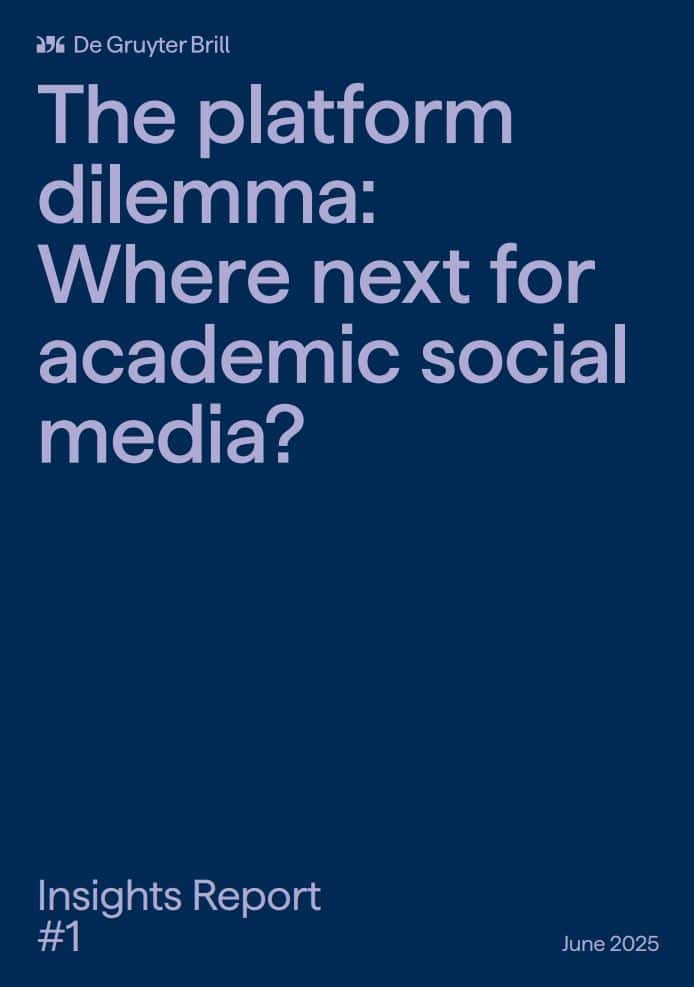Where Next for Academic Social Media? How Scholars Are Rethinking the Platforms They Use – and Why
The future of academic networking might look less like a feed – and more like your inbox.
For over a decade, social media has been a vital part of academic life. It’s where scholars have shared research, built networks and found community. But in 2025, the digital landscape is shifting – and fast.
At De Gruyter Brill, we recently surveyed nearly 1,800 researchers, authors and students to understand how they’re using social media today, and what they expect from it in the future. The results, published in our new report The Platform Dilemma: Where Next for Academic Social Media?, reveal a community in transition.
The Rise and Fall of Academic Twitter
For many, X (formerly Twitter) was once the beating heart of academic conversation. But that’s no longer the case. While many scholars still maintain accounts, fewer are actively posting or engaging. The reasons are familiar: toxicity, ownership changes and a growing sense that the platform no longer serves scholarly needs.
“I used to find that ‘academic Twitter’ was a good place to find calls for papers… but ever since it became X, the quality has deteriorated,” one respondent told us.
And yet, many feel they can’t leave. Over 60% of respondents said they feel pressure to maintain an online presence – especially early-career researchers, who see social media as essential for visibility and career progression.
A New Kind of Platform
But the story doesn’t end with decline. It’s also about reinvention.
Platforms like Bluesky and Mastodon are emerging as promising alternatives. While still niche, they’re attracting academics who are looking for safer, more inclusive spaces to connect. Bluesky users, for example, are significantly more likely to post original content, collaborate with peers, and promote their work than users on X.
“Bluesky feels more academic-friendly – like the early days of Twitter, but better curated.”
This shift isn’t just about where academics are going – it’s about how they want to engage. The future of academic social media may be less about broadcasting and more about building meaningful, trusted communities.
The Return of the Inbox
Another surprising finding? The resurgence of email.
A full 75% of respondents said they prefer to receive updates from publishers via email newsletters – far ahead of social media. Publisher websites and peer-to-peer networks also ranked highly.
This suggests a broader shift away from algorithm-driven feeds and toward more direct, curated communication. In a time of digital fatigue, many scholars are choosing slower, more intentional ways to stay informed.
What This Means for the Academic Community
For publishers, institutions and scholarly societies, these changes offer both a challenge and an opportunity. It’s time to rethink how we connect with academic audiences.
This might mean:
- Investing in email and newsletter strategies
- Exploring emerging platforms like Bluesky
- Supporting in-person events and peer networks
- Creating purpose-built digital spaces that reflect academic values
The question isn’t whether academics will be online. It’s where – and on whose terms.
A More Human Future?
Ultimately, our research suggests that the future of academic engagement may be quieter, slower, and more human. Scholars are no longer content to passively participate in chaotic or toxic platforms. They’re seeking spaces that foster meaningful exchange, not just visibility. And that’s something worth building toward.
Download the full research report here
[Title image by Barriography/iStock/Getty Images]
